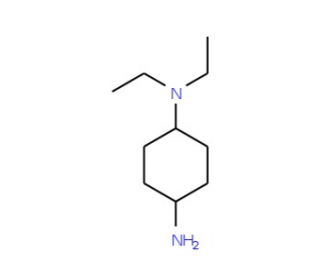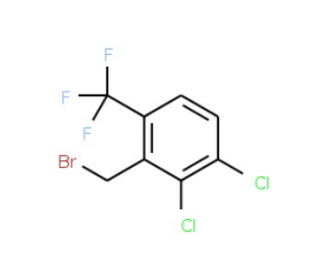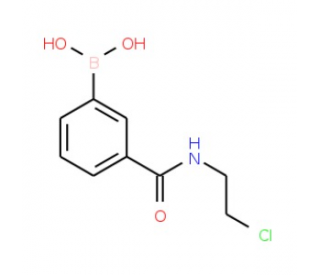详细说明
Species Reactivity
Human
Specificity
Detects human gp130 in direct ELISAs. In direct ELISAs, no cross-reactivity with recombinant human (rh) IL-2 R, rhIL-4 R, or rhIL-6 R is observed.
Source
Monoclonal Mouse IgG 1 Clone # 28126
Purification
Protein A or G purified from ascites
Immunogen
S. frugiperda insect ovarian cell line Sf 21-derived recombinant human gp130 extracellular domain
Formulation
Supplied in a saline solution containing BSA and Sodium Azide.
Label
Phycoerythrin
Applications
Recommended
ConcentrationSample
Flow Cytometry
10 µL/10 6 cells
See below
Please Note: Optimal dilutions should be determined by each laboratory for each application. are available in the Technical Information section on our website.
Data Examples
Flow Cytometry | Detection of gp130 in Human Blood Lymphocytes by Flow Cytometry. Human peripheral blood lymphocytes were stained with Mouse Anti-Human CD3 epsilon APC‑conjugated Monoclonal Antibody (Catalog # ) and either (A) Mouse Anti-Human gp130 PE‑conjugated Monoclonal Antibody (Catalog # FAB228P) or (B) Mouse IgG1 Phycoerythrin Isotype Control (Catalog # ). View our protocol for . |
Preparation and Storage
Shipping
The product is shipped with polar packs. Upon receipt, store it immediately at the temperature recommended below.
Stability & Storage
Protect from light. Do not freeze.
12 months from date of receipt, 2 to 8 °C as supplied.
Background: gp130
Glycoprotein 130 (gp130; also known as IL-6 signal transducer, IL-6 receptor beta, oncostatin-M alpha subunit) is a ubiquitously expressed, 130 kDa type I transmembrane glycoprotein and member of the type II subfamily, type I cytokine receptor family. Functionally, it is responsible for transduction of the IL-6 signal across the plasma membrane (1). Rat gp130 is synthesized as a 918 amino acid (aa) precursor with a 22 aa signal sequence, a 596 aa extracellular domain (ECD), a 22 aa transmembrane region, and a 278 aa cytoplasmic tail. Eleven potential N-linked glycosylation sites are found within the rat gp130 ECD (1). The ECD also contains an N terminal immunoglobulin (Ig)-like C2-type domain, followed by the cytokine receptor homology region (CHR) which is made up of two fibronectin type III-like domains and a WSXWS motif, and three additional fibronectin type III-like domains (2). The domains in the CHR are the structural hallmarks of the hematopoietic cytokine receptor family (2). Human gp130 shares 73% and 79% aa sequence identity with mouse and rat gp130, respectively. Gp130 serves as the signal transducing receptor subunit for the IL-6-type cytokines consisting of interleukin (IL)-6, IL-11, leukemia inhibitory factor (LIF), oncostatin M (OSM), ciliary neurotrophic factor (CNTF), new neurotrophin factor-1 (NNT-1), IL-27, cardiotrophin-1 (CT-1), and cardiotrophin like cytokine (CLC) (2 - 5). These cytokines are involved in a variety of functions including the modulation of inflammatory and immune responses, heart development, fertility, and many other activities (2).
References:
1. Wang, Y. et al. (1992) Genomics 14:666.
2. Muller-Newen, G. (2003) Sci. STKE pe40.
3. Heinrich, P.C. et al. (2003) Biochem. J. 374:1.
4. Stuhlmann-Laeisz, C. et al. (2006) Mol. Biol. Cell 17:2986.
5. Fischer, P. and D. Hilfiker-Kleiner (2008) Br. J. Pharmacol. 153:S414.Long Name:
Glycoprotein 130
Entrez Gene IDs:
3572 (Human); 16195 (Mouse); 25205 (Rat)
Alternate Names:
CD130 antigen; CD130; CDw130; DKFZp564F053; gp130 of the rheumatoid arthritis antigenic peptide-bearing soluble form; gp130; IL-6 receptor subunit beta; IL-6R subunit beta; IL-6RB; IL-6R-beta; IL6ST; interleukin 6 signal transducer (gp130, oncostatin M receptor); interleukin receptor beta chain; interleukin-6 receptor subunit beta; Interleukin-6 signal transducer; Membrane glycoprotein 130; membrane glycoprotein gp130; Oncostatin-M receptor subunit alpha










 粤公网安备44196802000105号
粤公网安备44196802000105号